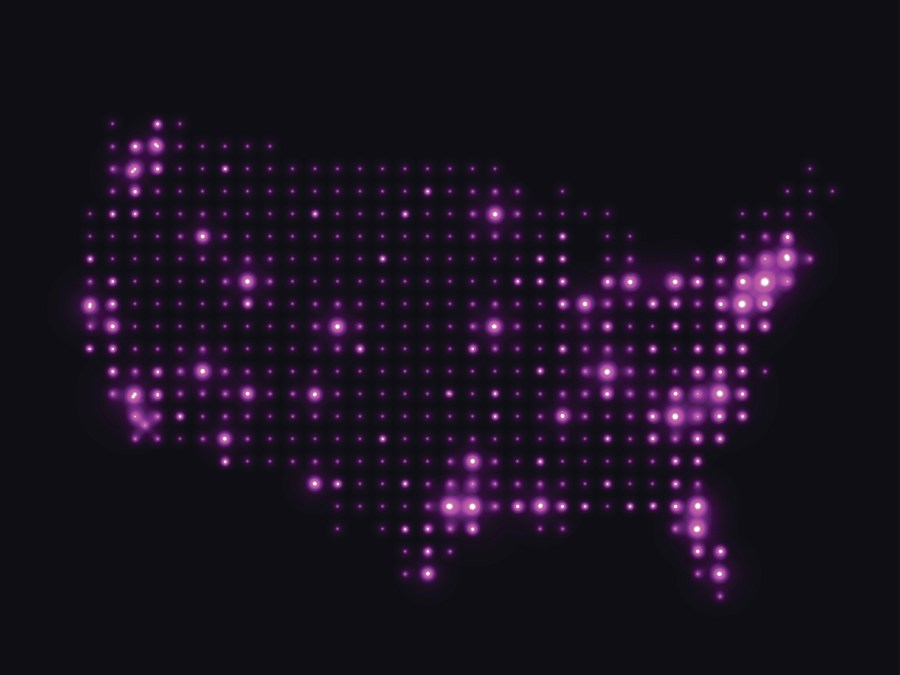GSA’s coronavirus bot shows how RPA can supplement pandemic response

As federal agencies adapt to the coronavirus pandemic, opportunities to use robotic process automation (RPA) are popping up wherever humans have been collecting ad hoc data about the health crisis. At the General Services Administration, one RPA project shows how an agency can quickly hand over important work to a bot.
In GSA’s case, the RPA team has developed a national COVID-19 bot to speed up collection of infection count data in counties where it manages federal buildings — one of about 20 new automations across the government tied to response.
GSA owns or leases space in about 9,600 buildings in 2,200 communities nationwide, so it coupled county-level infection count data with its geographic information systems (GIS) to visualize the coronavirus threat to its properties.
Staff easily compiled the data early on during the COVID-19 pandemic, but the task has proven daunting in recent weeks. The U.S. surpassed all other countries in number of cases at 140,904 as of 1:30 p.m. Eastern on Monday.
In order to update the data faster, the RPA team engineered the bot to collect infection counts multiple times a day and provide information to the GIS team in a more compatible format. Other agencies have similarly turned to RPA to keep pace with the spread of the virus by analyzing data more rapidly, monitoring workforce health more precisely and performing tasks not being completed by teleworkers who have to focus on mission-critical work.
“As the COVID-19 infection counts started rapidly increasing, the level of effort for aggregating all of the COVID-19 infection count data increased exponentially — ultimately requiring several employees to aggregate and process the data,” James Gregory, RPA program director, told FedScoop. “Due to this manually intensive process, the GIS team was only able to aggregate and report on the data once a day.”
The bot filled the gap. With fewer of those repetitive, high-volume tasks to do, the employees who were manually collecting the data have been reassigned to enhancing GSA’s map, which shows the buildings GSA manages across the U.S. and the associated infection counts in the counties where they’re located.
RPA is transformative technology, Gregory said, as employees increasingly telework due to the coronavirus. It can be initiated remotely or designed to run independently on a schedule.
While the national COVID-19 bot is GSA’s first virus-related automation, the agency has more than 45 others in production and a “very strong pipeline” for the conceptualization of more, he added.
Coronavirus-related RPA uses abound
Every agency has had to adjust its mission amid the pandemic, and RPAs have been added at several, according to UiPath, one of the companies assisting those projects. The Department of Homeland Security built an automation of about 500 bots in 36 hours to perform coronavirus-related data analysis. Agencies from the Centers for Medicare and Medicaid Services to the Food and Drug Administration are working with RPA developers to supplement teleworkers focused on mission-critical work with bots.
The latest bots are handling information technology functions like patch management and call center support and enabling telework by assigning virtual private networks to employees.
“Agencies also have an incremental responsibility to support the COVID-19 effort,” said Chris Townsend, vice president of federal sales at UiPath.
At CMS that’s taken the form of a health screening bot, which the Office of Human Capital uses to send daily email questionnaires to employees about their overall health and the potential onset of coronavirus symptoms like a cough or temperature.
Launched in a couple of days, the bot integrates with CMS’s Microsoft platforms, aggregates the data it receives and sends the report back to OHR for review. From there OHS may tell employees to get tested for COVID-19.
For now the bot is limited to CMS staff, but it could potentially be rolled out to Medicare recipients, Townsend said. UiPath also planned to reach out to the Office of Personnel Management to see if the bot might be deployed more widely across agencies.
Agencies that had very limited RPA pilots are leaning on the technology more heavily. The FDA rushed an urgent coronavirus-related procurement, and they aren’t alone.
“The shift from back-office automation to more mission-oriented automation, I think [COVID-19] will accelerate that,” Townsend said.
The Department of Housing and Urban Development is in the “early stages” of a new RPA deployment, according to a spokesperson who declined to comment on coronavirus support.
Meanwhile, the Department of Veterans Affairs expressed interest last week in an automation at Cleveland Clinic facilitating the ingestion and analysis of its increased patient load due to COVID-19. VA provides care at 1,243 health care facilities.
“They’re still vetting through what’s out there and what they can apply in their environment,” Townsend said.
The White House Coronavirus Task Force has been made aware of the interest in RPA, Townsend said.
UiPath is offering bots at no cost to enterprise customers for 90 days during the pandemic, but the Federal Acquisition Regulation makes that harder. The company is exploring how agencies might be able to use RPA on a provisional basis.
“We’re willing to do that,” Townsend said.

